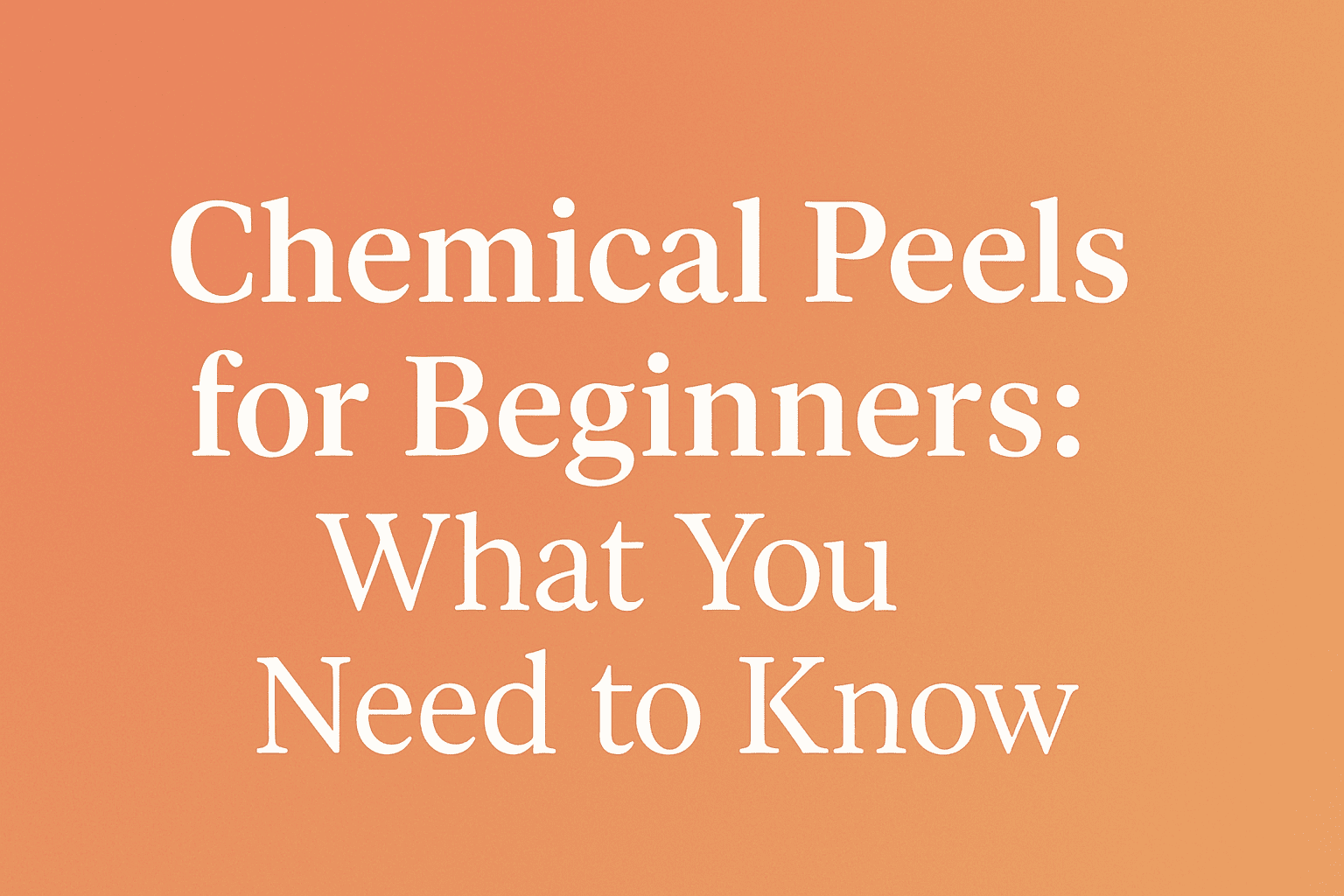If you’ve ever looked in the mirror and thought your skin looked a bit dull, uneven, or tired, you’re not alone. It’s one of the most common reasons people start exploring professional skin treatments. And one of the simplest, most time-tested options out there is the chemical peel.
But if you’re new to the idea, it can sound a bit intense. The word “chemical” tends to put people off. The good news? A properly selected peel can be incredibly gentle—and highly effective—when matched to your skin type and goals.
Here’s what to know if you’re just getting started.
What Is a Chemical Peel?
A chemical peel is a type of exfoliating treatment that uses a safe chemical solution to help remove the surface layer of dead skin cells. Depending on the strength and type of peel, it can help improve skin texture, even out pigmentation, and reduce the appearance of fine lines or breakouts over time.
Think of it as a deeper way to refresh the skin than what you can achieve with at-home scrubs or masks.
Who Are Chemical Peels For?
Most skin types can benefit from a chemical peel—but not all peels are suitable for everyone. That’s why an in-person consultation is so important.
You might consider a chemical peel if:
- Your skin looks dull or feels rough
- You’re noticing uneven tone or pigmentation
- You get mild acne or clogged pores
- You’d like a smoother base for your makeup
- You want to age gracefully and support healthy skin turnover
It’s not about chasing trends—it’s about supporting your skin in the way it needs.
What Happens During a Peel?
The process is usually pretty straightforward. After cleansing your face, a trained practitioner applies the peel solution, lets it work for a few minutes, then neutralises and removes it. You may feel a light tingling or warmth, but discomfort is generally minimal with beginner-friendly peels.
The whole treatment often takes less than 30 minutes.
What About Downtime?
For superficial peels—often chosen as a starting point—there’s usually very little to no downtime. You might notice some light flaking or redness for a day or two, but it’s typically easy to manage with gentle skincare.
Deeper peels are available too, but they come with more peeling and recovery time, and need to be matched carefully to the individual.
How Many Treatments Do I Need?
One peel can leave your skin feeling smoother and more refreshed—but like most skin treatments, the best results come from consistency. Your practitioner may suggest a series of peels, spaced a few weeks apart, depending on what your skin needs.
It’s also not uncommon to alternate peels with other treatments like HydraFacials or needling, depending on your long-term goals.
Important Things to Know
- Always wear sunscreen after a peel—your skin will be more sensitive to sunlight.
- Avoid exfoliating products, retinoids, or harsh scrubs in the days after your treatment.
- Chemical peels should only be performed by someone trained and qualified—they’re not one-size-fits-all.
Final Thoughts
Chemical peels aren’t about harsh acids or dramatic peeling. For beginners, they’re more about gently encouraging your skin to shed what it no longer needs—so healthier, brighter skin can come through.
If you’re curious but unsure where to begin, a personalised skin consultation is the best place to start. At Charlestown Cosmetic Medicine, we offer honest, evidence-based advice tailored to your skin and comfort level.

